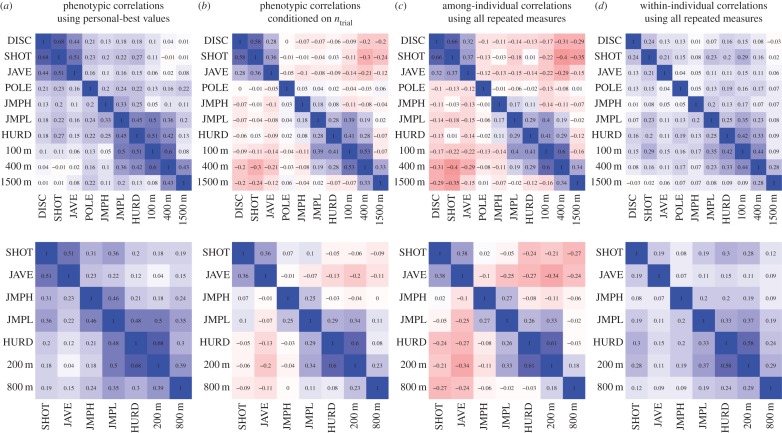Figure 1.
Performance trade-offs in elite athletes competing in combined-events sports. ‘Heat maps’ display the sign and magnitude of the correlations among performance in the 10 decathlon events (top row; n = 636) and the seven heptathlon events (bottom row; n = 733). Shown are the phenotypic correlations based on personal-best values (a) before and (b) after correcting for the total number of repeated measures (ntrial; see electronic supplementary material, figure S1). Comparing (a) versus (b) shows the extent of the bias related to the use of ‘personal bests’ when individuals differ in ntrial. Clearly, (b) shows performance trade-offs and clusters of positive correlations along the main diagonal, which correspond to functional groups (throwing, jumping, running). Correlations at the (c) among- and (d) within-individual levels using all repeated performances (n = 2830 decathlons and 3588 heptathlons) and controlling for effects of year, Julian day, wind assistance, age, and experience. Comparing panels (b) versus (c) shows that stronger trade-offs and functional clustering emerge after factoring out sources of within-individual correlations (d). Events: discus (DISC), shot put (SHOT), javelin (JAVE), pole vault (POLE), high jump (JMPH), long jump (JMPL) and hurdles (HURD). Times for running events were multiplied by −1 such that larger values indicate better performance.

